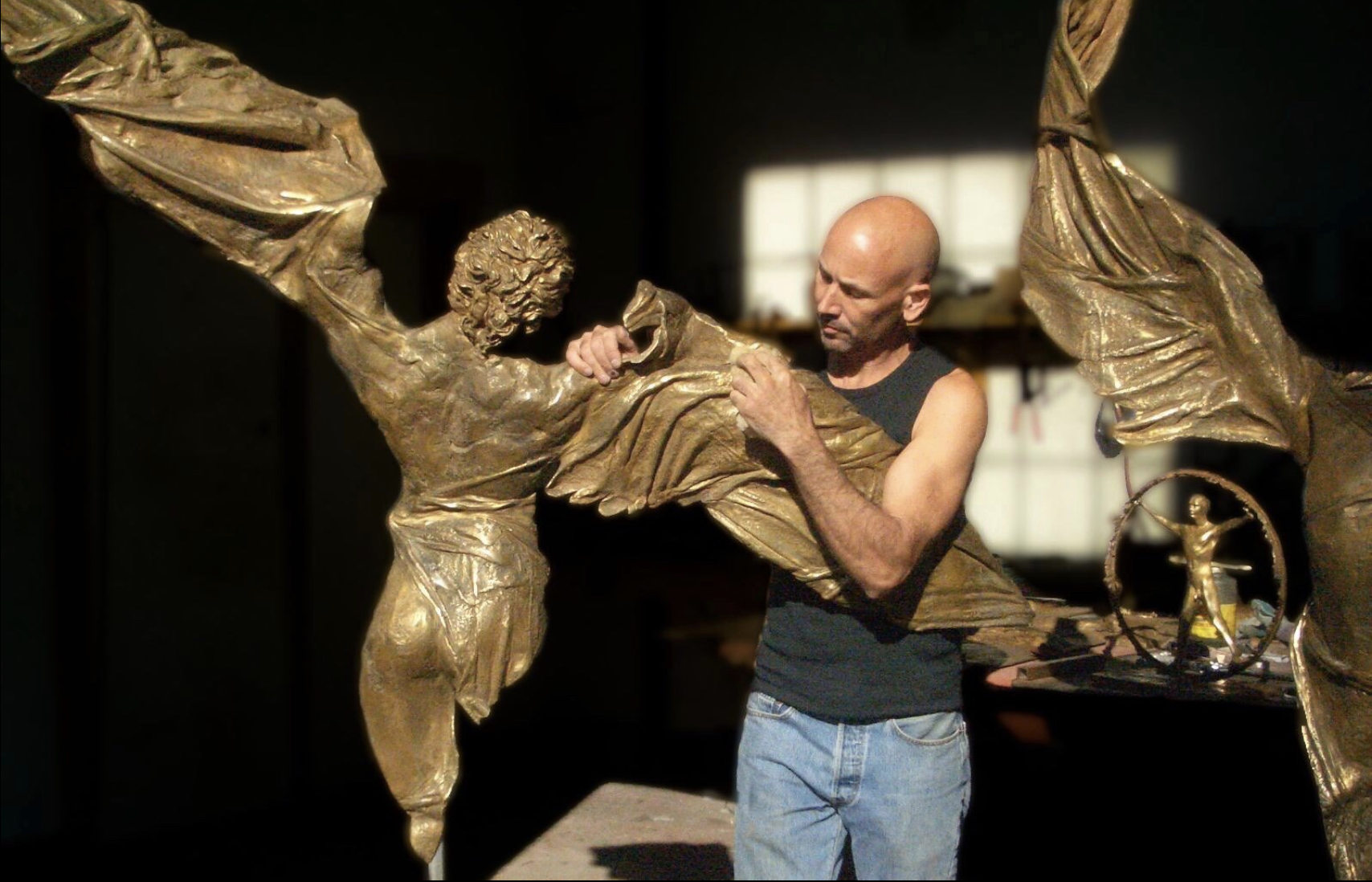Interview with Romolo Del Deo: Making Art that Endures
Flora and Ulrich talk to the acclaimed artist and master sculptor Romolo Del Deo about making art that stands the test of time. Taking a stand against the fast, momentary and disposable ‘now’ culture of the present, Romolo instead focuses on creating enduring, sustainable, ‘long art’ for the 21st century. He tells us how his sculpture is preoccupied with two major aesthetic sources of inspiration; a fascination with the artefacts washed up upon the ocean shores of his native Provincetown and a natural affinity with the archeological ruins of his Italianate background and training.
Romolo shares with Ideal Spaces an interest in creating spaces that work for the people, and express important and essential, historically tested ideas: something that speaks to long art’s interest in the historical record of how art is made and used. We discuss an upcoming collaboration between Studio Romolo and Ideal Spaces for “The Heavenly City and Paradise”, an Ideal Spaces event held in the Evangelical Church in Karlsruhe, Germany in September 2022, which explored through the medium of drawing, graphic design and video projection, the many forms a heavenly city can take. We also learn about Romolo’s sculpture “The Tree of Life Which is Ours”, an artwork recently installed at the Venice Biennale, whose part-ancient ruin, part-driftwood sea wrack yet distinctly contemporary appearance tells an interesting story about the fast-paced and often destructive world we live in today.
After completing a distinguished career at Harvard and the Academy of Fine Arts in Florence, Romolo turned away from his early successes and the artistic trends of the late 20th Century. For several years he isolated himself on a mountaintop in Italy, where he created a blueprint for an alternative future art. He foresaw that there would come a time when we would be saturated with disposable and ill-made things, While everyone else was racing to define the moment, Romolo dedicated himself to an art that expressed the eternal. His labor-intensive, thoughtful pieces have become a refreshing counterpoint to the ever faster, more trendy, more transitory art of his peers. Romolo envisioned a future where society as a whole would move beyond disposable consumerism, which was drowning the planet in waste, to re-embrace the value of thoughtful, skillfully handcrafted masterworks created over time from the noble natural materials the ancients used. This manner of working creates artworks which focus an artist’s creativity, into less wasteful use of resources. Romolo calls this enduring art for the new millennium, “Long Art.”
Romolo’s website: http://www.studioromolo.com/




Leave a Reply